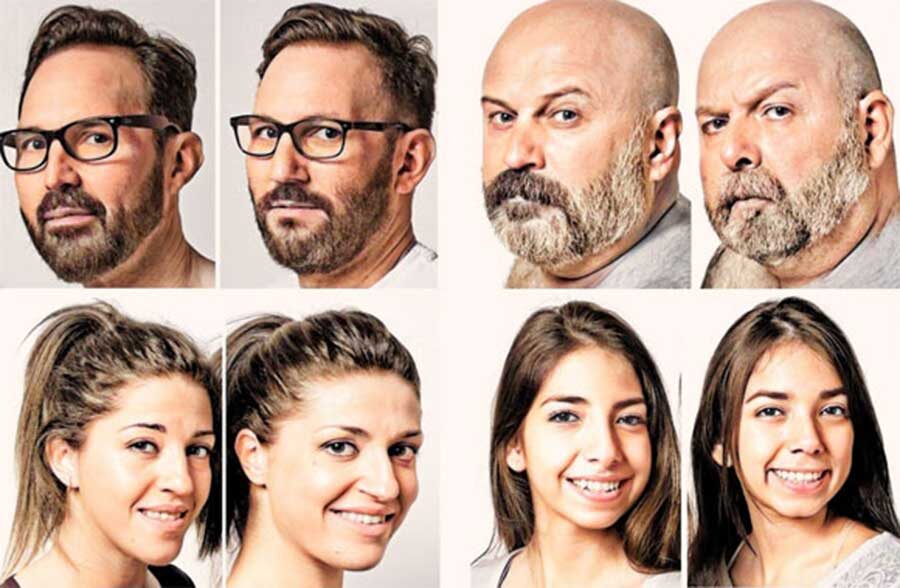
"For decades, the existence of individuals who resemble each other without having any family ties has been described as a proven fact, but only in anecdotal terms and without any scientific justification," said senior author Dr. Manel Esteller, a researcher at the Josep Carreras Leukaemia Research Institute.In their study, Dr. Esteller and his colleagues set out to characterize a set of look-alike humans on a molecular level.
"The widespread use of the Internet and social networks for image-sharing has meant that we are now able to identify and study such people."
To do so, they recruited human doubles from the photographic work of François Brunelle, a Canadian artist who has been obtaining worldwide pictures of look-alikes since 1999. They obtained headshot pictures of 32 look-alike pairs.
They determined an objective measure of likeness for the pairs using three different facial recognition algorithms.
In addition, the participants completed a comprehensive biometric and lifestyle questionnaire and provided saliva DNA for multiomics analysis.
"This unique set of samples has allowed us to study how genomics, epigenomics, and microbiomics can contribute to human resemblance," Dr. Esteller said.Overall, the results revealed that these individuals share similar genotypes, but differ in their DNA methylation and microbiome landscapes.
Half of the look-alike pairs were clustered together by all three algorithms.
Genetic analysis revealed that 9 of these 16 pairs clustered together, based on 19,277 common single-nucleotide polymorphisms.
Moreover, physical traits such as weight and height, as well as behavioral traits such as smoking and education, were correlated in look-alike pairs.
Taken together, the results suggest that shared genetic variation not only relates to similar physical appearance, but may also influence common habits and behavior.
"Our findings provide a molecular basis for future applications in fields such as biomedicine, evolution, and forensics," Dr. Esteller said.The findings appear today in the journal Cell Reports.
"It would be very interesting to follow up the potential application in forensics, using the genome of unknown people to prepare bioinformatic strategies to reconstruct the face from DNA."
"And in medicine, we may be able to deduce the genome of a person from facial analysis and hence use this as a pre-screening tool to detect the presence of genetic mutations associated with disease and apply preventive strategies at an early stage."
"Some previous studies have compared the genome of individuals with face traits, but in the general population," he added.
"Our study shows genetic markers that are critical in the development of the shape of the nose, lip, and mouth, plus completely novel determinants of bone structure and skin texture that also provide characteristic features of our face."
"The environmental markers, such as the epigenome and the microbiome were more distinct between look-alikes and thus the differences in these people who resemble each other can be attributed to the chemicals that regulate the same DNA sequence and to the composition of the microbiome."
"Because the human population is now 7.9 billions, these look-alike repetitions are increasingly likely to occur," he said.
"Analyzing a larger cohort will provide more of the genetic variants shared by these special individual pairs and could also be useful in elucidating the contribution of other layers of biological data in determining our faces."
Ricky S. Joshi et al. 2022. Look-alike humans identified by facial recognition algorithms show genetic similarities. Cell Reports 40 (8): 111257; doi: 10.1016/j.celrep.2022.111257



It's funny how this article subtly destroys the unique values inherent in each individual and reduces them down to just quirks of DNA.